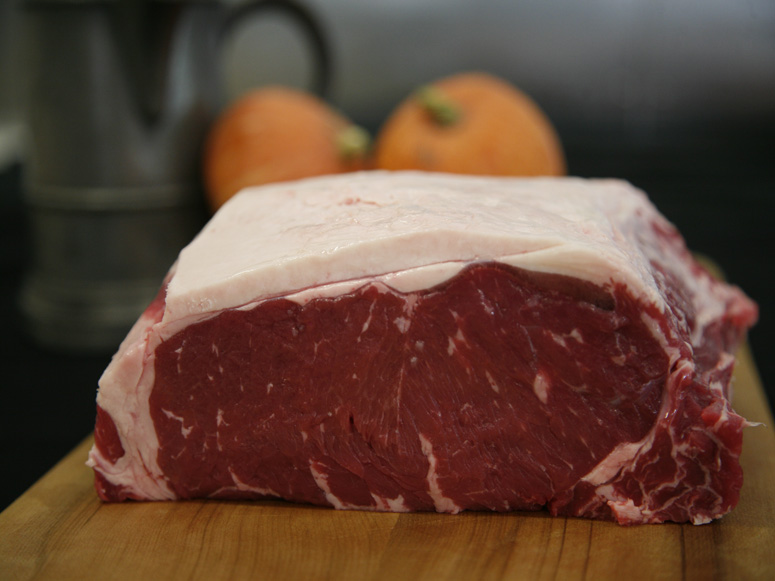
Agricultural News
Global Meat Production and Consumption Continue to Rise
Tue, 11 Oct 2011 10:54:47 CDT
 Global meat production and consumption have increased rapidly in recent decades, with harmful effects on the environment and public health as well as on the economy, according to research done by Worldwatch Institute's Nourishing the Planet project for Vital Signs Online. Worldwide meat production has tripled over the last four decades and increased 20 percent in just the last 10 years. Meanwhile, industrial countries are consuming growing amounts of meat, nearly double the quantity than in developing countries.
Global meat production and consumption have increased rapidly in recent decades, with harmful effects on the environment and public health as well as on the economy, according to research done by Worldwatch Institute's Nourishing the Planet project for Vital Signs Online. Worldwide meat production has tripled over the last four decades and increased 20 percent in just the last 10 years. Meanwhile, industrial countries are consuming growing amounts of meat, nearly double the quantity than in developing countries.
"Much of the vigorous growth in meat production is due to the rise of industrial animal agriculture, or factory farming," said Danielle Nierenberg, Worldwatch senior researcher and director of Nourishing the Planet. "Factory farms pollute the environment through the heavy use of inputs such as pesticides, herbicides, and fertilizers used for feed production."
Large-scale meat production also has serious implications for the world's climate. Animal waste releases methane and nitrous oxide, greenhouse gases that are 25 and 300 times more potent than carbon dioxide, respectively.
"The world's supersized appetite for meat is among the biggest reasons greenhouse gas emissions are still growing rapidly," said Worldwatch President Robert Engelman. "Yet properly managed and scaled meat production----like the kind pursued by small-scale pastoralists on dry grasslands----could actually sequester carbon dioxide. It's largely a matter of rethinking meat at both ends of the production-consumption trail."
Dirty, crowded conditions on factory farms can propagate sickness and disease among the animals, including swine influenza (H1N1), avian influenza (H5N1), foot-and-mouth disease, and mad-cow disease (bovine spongiform encephalopathy). These diseases not only translate into enormous economic losses each year----the United Kingdom alone spent 18 to 25 billion dollars in a three-year period to combat foot-and-mouth disease----but they also lead to human infections.
Mass quantities of antibiotics are used on livestock to reduce the impact of disease, contributing to antibiotic resistance in animals and humans alike. Worldwide, 80 percent of all antibiotics sold in 2009 were used on livestock and poultry, compared to only 20 percent used for human illnesses. Antibiotics that are present in animal waste leach into the environment and contaminate water and food crops, posing a serious threat to public health.
The amount of meat in people's diets has an impact on human health as well. Eaten in moderation, meat is a good source of protein and of important vitamins and nutrients such as iron, zinc, and vitamins B3, B6, and B12. But a diet high in red and processed meats can lead to a host of health problems, including obesity, diabetes, cardiovascular disease, and cancer.
Eating organic, pasture-raised livestock can alleviate chronic health problems and improve the environment. Grass-fed beef contains less fat and more nutrients than its factory-farmed counterpart and reduces the risk of disease and exposure to toxic chemicals. Well-managed pasture systems can improve carbon sequestration, reducing the impact of livestock on the planet. And the use of fewer energy-intensive inputs conserves soil, reduces pollution and erosion, and preserves biodiversity.
"Pastoral farming systems, especially in developing countries, improve food security and sustain the livelihoods of millions of farmers worldwide," said Nierenberg. "Eating less meat and supporting pastoralist communities at every level is essential to combat the destructive trend of factory farms."
Further Highlights from the Research:
-Pork is the most widely consumed meat in the world, followed by poultry, beef, and mutton.
-Poultry production is the fastest growing meat sector, increasing 4.7 percent in 2010 to 98 million tons.
-Worldwide, per capita meat consumption increased from 41.3 kilograms in 2009 to 41.9 kilograms in 2010. People in the developing world eat 32 kilograms of meat a year on average, compared to 80 kilograms per person in the industrial world.
-Of the 880 million rural poor people living on less than $1 per day, 70 percent are partially or completely dependent on livestock for their livelihoods and food security.
-Demand for livestock products will nearly double in sub-Saharan Africa and South Asia, from 200 kilocalories per person per day in 2000 to some 400 kilocalories in 2050.
-Raising livestock accounts for roughly 23 percent of all global water use in agriculture, equivalent to 1.15 liters of water per person per day.
-Livestock account for an estimated 18 percent of human-caused greenhouse gas emissions, producing 40 percent of the world's methane and 65 percent of the world's nitrous oxide.
-Seventy-five percent of the antibiotics used on livestock are not absorbed by the animals and are excreted in waste, posing a serious risk to public health.
-An estimated 11 percent of deaths in men and 16 percent of deaths in women could be prevented if people decreased their red meat consumption to the level of the group that ate the least.
-Eating organic, pasture-raised animals can be healthier and environmentally beneficial compared to industrial feedlot systems.
Worldwatch's Nourishing the Planet project has traveled to 25 countries across sub-Saharan Africa, shining a spotlight on communities that serve as models for a more sustainable future. The project is unearthing innovations in agriculture that can help alleviate hunger and poverty while also protecting the environment. These innovations are elaborated in the recently released report State of the World 2011: Innovations that Nourish the Planet.
WebReadyTM Powered by WireReady® NSI
Top Agricultural News
More Headlines...



















